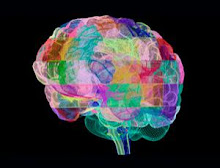The story of how life came to be left-handed.
The property of handedness, known to chemists as chirality, is a feature of many molecules whose arrangement of atoms is not completely symmetrical. A chiral molecule comes in two forms that are rather like a pair of gloves. Right and left-handed gloves are essentially identical, with the same basic components, four fingers and a thumb, and the same function of keeping our hands snug and protected. They are not exactly the same, however: you cannot rotate or flip a glove of one type so that it will superimpose perfectly on the other. But look in a mirror, and a left-handed glove becomes right-handed.
Similar molecular mirror-image forms are called enantiomers. They are made from the same atoms and have the same chemical and physical properties. Most chemical reactions produce equal quantities of both.
That makes nature's predilection for one form - its "homochirality" - all the more strange. Only left-handed or "l" amino acids make up the proteins that provide our cells with structure and regulate their functions, and only right-handed or "d" sugars play an active part in biochemistry. It is like keeping a drawer full of only one sort of glove, while stubbornly refusing to wear the other.
Star turn
Perhaps homochirality is the result of a chance asymmetry in life's early history on Earth, amplified by time and evolution. In that case, you might expect it to be non-existent or even reversed elsewhere. Yet the builder's rubble left over from the construction of the solar system tells a different story. "For every type of amino acid found in meteorites there is an excess of the left-handed form over the right-handed of between 2 and 18 per cent," saysUwe Meierhenrich of the Nice Sophia Antipolis University in France. "An excess of the right-handed form has never been found." Hope this is of interest!
